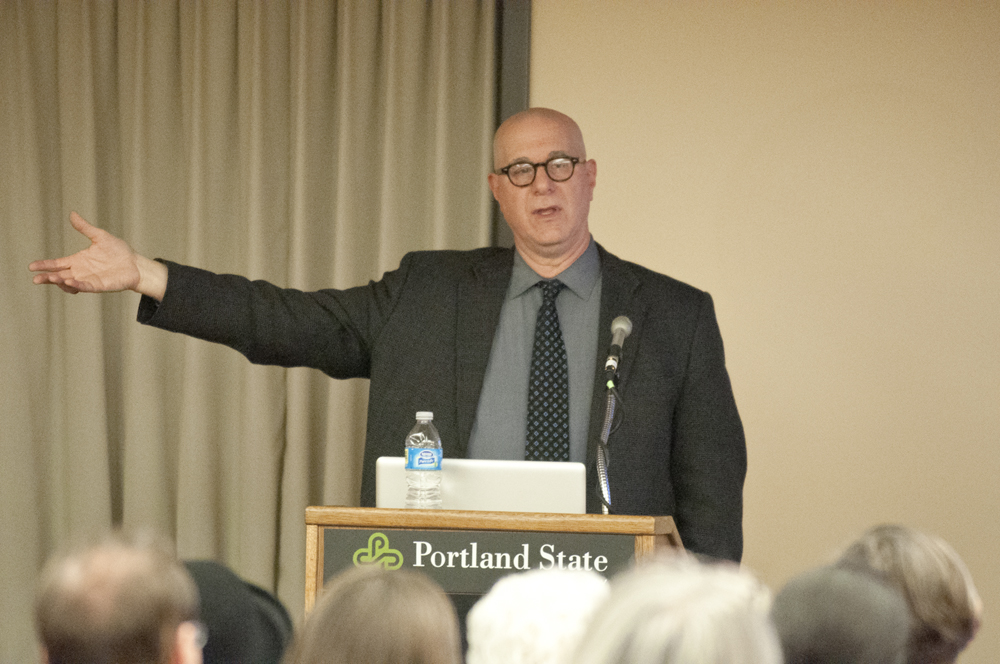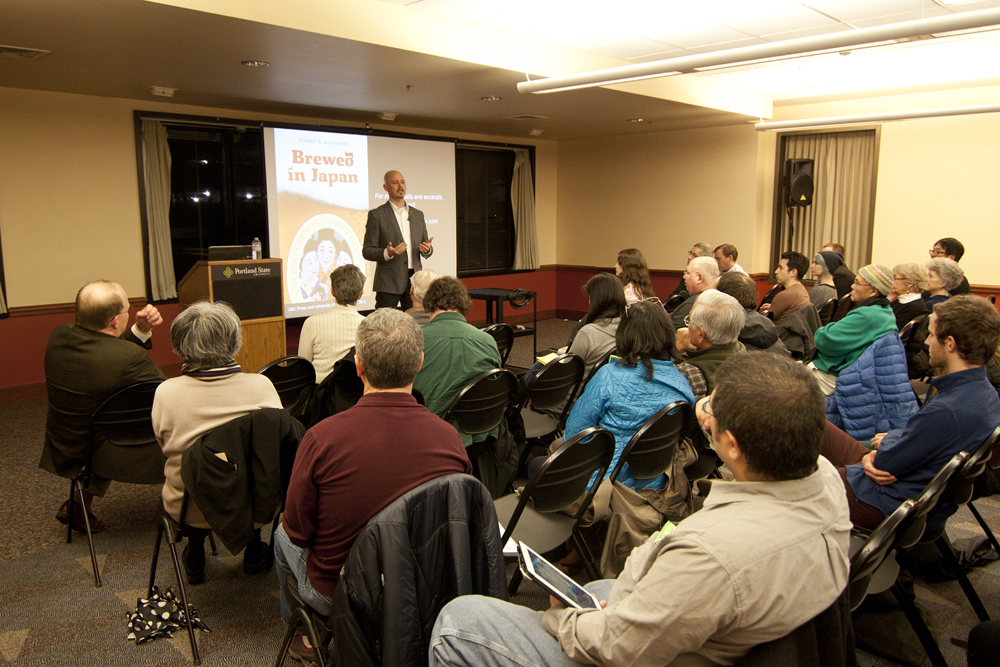On the night of Nov. 8, MIT’s Ford International Professor of Political Science Dr. Richard Samuels engaged a packed room with discourse on the truly troubling and challenging topic discussed in his recent book, 3.11 Disaster and Change in Japan.
The Tohoku earthquake off the coast of Japan and subsequent tsunami of March 11, 2011, is a crisis that still resonates the world over to this day. As the tsunami and subsequent meltdown of nuclear reactors in the region displaced and ended the lives of tens of thousands of people in Japan, the country is still undergoing massive change as a result. The nuclear reactors in Fukushima on the eastern Japanese coast are still unstable, and radiated water has continually been leaking into the Pacific Ocean for two and a half years.
While this information is alarming, Samuels had other less sensationalist issues to tackle concerning Japan’s national conversation. This conversation, broadcast to the world, is a result of the political figures in their government who used the disaster as a means to further their own interests, Samuels said.
“Crises are instruments; crises are tools,” said Samuels. “Political actors will seize upon them, begin to tell stories about them, frame the event…to legitimate their preference, to delegitimate the preference of their adversary. To express, to fortify and to sell their ideas about what lessons [the country should] take away from the catastrophe to put Japan on the right path.”
This method of using catastrophes as tools leads to the spinning of multiple stories that are often at odds with one another, which Dr. Samuels refers to as “dueling narratives.”
Heroes and villains are created, small towns band together and show the world what the power of community can accomplish in the face of adversity while specific government officials muck things up in the cities, and the list goes on. But each and every one of these stories changes how the catastrophe was used, Samuels said.
“If you want to understand how a crisis is used, you’ve got to listen to the national conversation,” said Samuels.
“Prime Minister Kan Naoto became the villain in chief…after [the Tokyo Electric Power Company] he was the most vilified character in the entire story,” said Samuels. “People didn’t like his disaster management and his emergency management activities…Some said he was getting too deep into the weeds, some said he was too detached. Some said he was too bossy, some said he wasn’t bossy enough, he didn’t take charge… he had a lot of political enemies, both within his party and outside.”
“The Japanese Self Defense Force officers were the true heroes of the 3/11 drama,” said Samuels. This story was used as a way of strengthening public opinion of the military: “There is no threat the Japanese military can’t imagine and be prepared for. Their virtues were extolled using the same language that was used to ridicule the ineptitude of [government officials].”
While it cannot be debated that 3/11 was a terrible and sobering catastrophe, Samuels found that Japanese opinion concerning the gravity of the catastrophe’s change on Japanese society was slightly skewed. Across the board, it seemed that the disaster was not enough to push Japan into the next era of change. However, the country was affected, and different people were measuring change in different quantities.
This led to a jarring quote uttered by a young member of the Democratic Party of Japan: “Only 20,000 people died. 30,000 people die every year from suicide, that never gets fixed. [3/11] was simply not big enough.”
Samuels made an effort to point out that even he was astounded hearing this but realizes now that the man was not trivializing the deaths of these people. The party member was lamenting that the level of suffering wasn’t larger so that it might enact social change. In fact, this comment aligned with an insistent finding that Samuels came across while researching his book.
“Much of the crisis’ rhetoric…might end up as little more than empty and self-serving chatter,” said Samuels. “[The party member] was voicing an unpleasant truth about crises in general: Even citizens who are moved and [willing to] help other citizens might not be able to sustain their empathy very long because they have their own lives to live and their own crises to deal with.”
“In spite of suffering a catastrophic disaster that killed 20,000 people and included a nuclear meltdown, it doesn’t seem like the result will be a significant change in Japan,” said professor Ken Ruoff, director of the Center for Japanese Studies at Portland State. “There’s been some minor tweak in policy, there’s more of an anti-nuclear movement than there used to be…but nonetheless…there really has been much less change, in spite of all the dramatic rhetoric, than one might expect.”
Acknowledging this lack of change may be difficult. Students seemed to feel Dr. Samuels’ lecture helped demystify Japan’s handling of the crisis. Ashley Schulz, a junior studying Japanese at PSU, hoped it was as enlightening for others as she found it to be.
“I hope that the people in attendance gained more insight into how Japan has handled the disaster,” said Schulz, “and that some of their concerns and questions about the disaster were answered.”
Regardless of what the underlying narrative of the 3/11 tragedy might seem to become, Samuels stresses that we are too close temporally to the event to be able to understand it on a historical level. The national conversation will not lend to what the true story of 3/11 will ultimately become. Samuels has his guesses, however.
“I think it will be a story of heroic soldiers, of a selfish private sector and incompetent bureaucrats in the central government. And Japan will go on,” said Samuels.






